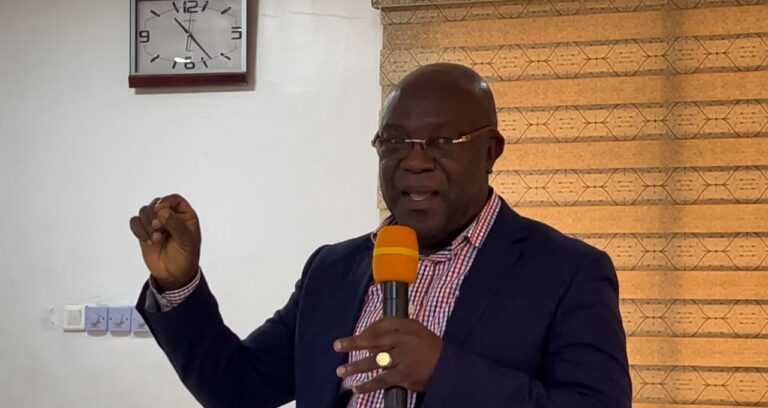UMaT To Clean Polluted Water Bodies With Technology – Vice Chancellor

Vice Chancellor of the University of Mines and Technology (UMaT), Professor Richard Kwasi Amankwah, has reaffirmed the institution’s commitment to tackling the high pollution levels in Ghana’s water bodies caused by illegal mining activities, otherwise called galamsey.
The Tarkwa-based University, has been at the forefront of finding solutions, having developed a technology to clean polluted water bodies.
This innovation, has the potential to make a substantial difference in mitigating the effects of illegal mining on water resources.
Speaking at the Mining for Development Forum in Tarkwa, hosted by Ghana Chamber of Mines on Tuesday, November 12, Professor Amankwah, shared insights on how the university, can help mitigate the turbidity levels in water bodies affected by the galamsey menace.

“UMaT is making significant strides. Recently, we partnered with the Minerals Income Investment Fund (MIIF) to tackle water pollution. Although some have questioned this initiative, I can confidently attest to its validity. With proof of concept in hand, I firmly believe UMaT, backed by MIIF, can successfully clean our turbid water bodies. I’m committed to this endeavor, and with support, our university can serve both God and country,” he said in a report by 3news.com.
The forum, was under the theme; “Unleashing the Potential of Mining for Local Economic Development.”
He mentioned that, the University has been actively training thousands of small-scale miners on responsible mining practices since the ban on illegal mining, but whether they go back and practice what they learnt, is another matter.
According to him, the revamping of small-scale mining sector, requires a little bit of education, engagement, engineering and most of all attitudinal change, not only from the miners, but also from those who benefit from the activities.
He said, their training programmes focus on promoting sustainable artisanal and small-scale mining practices.
He said key points of their training, was the three-pond purification system which was adopted by the Minerals Commission.
“Consider a small-scale miner working near a stream or river. They can dig three ponds on their concession. First, wash materials from the trammel or sluice box into the initial pond. Allow the water to flow into the second pond, and by the time it reaches the third pond, it will be clean enough for reuse.”
“This method, championed by the Minerals Commission, minimizes river pollution. Unfortunately, only about 10% of small-scale miners have adopted this practice, while approximately 90% continue washing directly into streams and rivers.”
However, he noted that many small-scale miners struggle to adopt their direct smelting technology.
“We’ve developed a mercury-free process, known as direct smelting. This method eliminates the need for mercury in the final consolidation stage. Instead, the material is dried and smelted directly, resulting in a more efficient recovery process”.
“The benefits of direct smelting include, higher gold recovery rates compared to mercury, cost-effectiveness and environmentally friendly (mercury-free)”
“However, small-scale miners have expressed concerns that adopting this method would disrupt their supply chain, making it difficult for them to implement,” he pointed out.
The event brought together key stakeholders from local government, traditional leaders, media, regulatory bodies, and mining companies, fostering insightful discussions on driving sustainable economic growth in mining communities.
Source: Anchorghana.com




